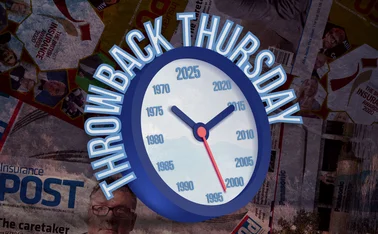
Blog: Demonstrating value for money

Need to know
- Claims frequency, claims admittance rates and claim amounts are measures of value for consumers, says FCA
- Value should be more focused on the sales process than on product performance
- Demonstrating value requires a digital front end and agility in policy and claims
I was intrigued to read the introductory comments made in the Financial Conduct Authority publication in late January about the results of its pilot study into general insurance value measures for a subset of general insurance products.
"The data will provide consumer groups, consumers and market commentators with additional indicators of value for the insurers we regulate. The data is not intended primarily to inform customers' purchasing decisions, and we do not expect individual consumers to review and assess the published data."
I am tempted to ask ‘what's the point then?'.
It seems that the mainstream press - which might be the medium by which the Financial Conduct Authority research could reach the buying public - was equally underwhelmed. A Google search of news reveals a muted response from trade publications.
The measures set out by the FCA suggest that claims frequency, claims admittance rates and claim amounts are measures of value from a consumer perspective although as it says in its introductory note:
"Consumers making a purchasing decision may use the value measures data but should also consider factors such as prices, product benefits, breadth of cover, excess levels, complaints volumes, average claims settlement periods and product assessment websites."
Value for money
So how do insurers demonstrate value for money and provide reassurance that consumers are not buying a pig in a poke?
There are clearly more complex factors that determine whether an insurance policy is better value than price alone - yet most consumers will continue to focus on that one measure - and measures of service delivery, such as Defaqto star ratings, seem to have lost their differentiation as more insurers achieve five stars.
Yet the real issue that the FCA seemed to be trying to resolve was whether the type of products being bought are ‘value for money' which needs to be much more focused on the sales process rather than on the performance of the products once purchased - for example, what are the equivalent statistics for those people who did not buy the products that have been analysed?
Other complex consumer products have had a ‘levelling' measure imposed upon them. For example, in the 1980s, the annual percentage rate was introduced as a measure to allow comparison of the cost of borrowing and more recently, energy companies have been instructed to reduce the complexity of their tariff rates to enable switching comparisons to be made more easily. So, can such a composite measure be created for insurance policies?
There are, of course, many consumer motivations for buying insurance, ranging from compulsory purchase through to a genuine risk assessment versus the cost of cover. Investment in greater consumer engagement through ‘digital' initiatives might provide insurers and brokers with the toolset to demonstrate the value of their products and give consumers the ability to tailor the risks they want the insurer to cover. But this will require more than a digital front end - it will require a degree of agility in policy and claims processes that many organisations will find extremely difficult to fulfil.
In the meantime I suspect that many consumers will still buy on instinct rather than a measured decision driven by insight.
Only users who have a paid subscription or are part of a corporate subscription are able to print or copy content.
To access these options, along with all other subscription benefits, please contact info@postonline.co.uk or view our subscription options here: http://subscriptions.postonline.co.uk/subscribe
You are currently unable to print this content. Please contact info@postonline.co.uk to find out more.
You are currently unable to copy this content. Please contact info@postonline.co.uk to find out more.
Copyright Infopro Digital Limited. All rights reserved.
As outlined in our terms and conditions, https://www.infopro-digital.com/terms-and-conditions/subscriptions/ (point 2.4), printing is limited to a single copy.
If you would like to purchase additional rights please email info@postonline.co.uk
Copyright Infopro Digital Limited. All rights reserved.
You may share this content using our article tools. As outlined in our terms and conditions, https://www.infopro-digital.com/terms-and-conditions/subscriptions/ (clause 2.4), an Authorised User may only make one copy of the materials for their own personal use. You must also comply with the restrictions in clause 2.5.
If you would like to purchase additional rights please email info@postonline.co.uk








